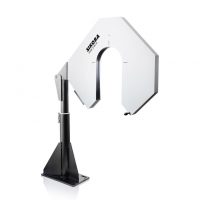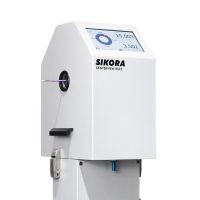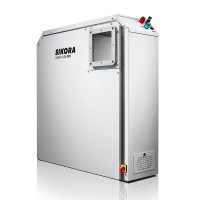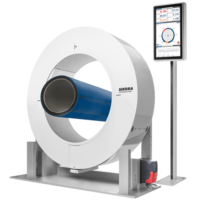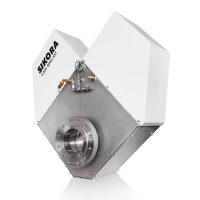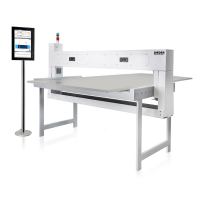Measurement of thickness of wires, cables, hoses, tubes, sheets and plates
By measuring the thickness during the running production process, material consumption can be minimized as well as nominal values can be adhered to and recorded for a continues product quality. This is a crucial criterion especially for automated processing.
Contact measuring techniques in industrial production are typically inaccurate, prone to error or complex: During non-destructive inspection, tactile and mechanical measuring probes compare against a reference value. During destructive inspection, a sample can be further measured with a measuring microscope.
However, contactless measuring methods are not intended to affect neither the measuring material nor the sensors in their structure. Here, a distinction is made between an offline sampling inspection and an inline (also: online) measurement during the running production process.
Offline measuring method for non-contact thickness measurement
For the contactless sampling inspection, there is a variety of technologies which in their basic function as distance sensor can also be applied for thickness measurement after being traversed accordingly:
- Optical sensors
- Inductive sensors
- Magnetic field sensors
- Eddy-current sensors
Today, however, almost every extrusion line for round products is not only equipped with contactless inline, meaning continuous, measuring technology for thickness measurement, but requires advanced parameters for quality control, for example, the roundness, sagging or the degree of foaming. Extrusion plants for plastic sheets in turn benefit, besides the measurement of the sheet thickness, also from the measurement of the volume density and surface weights.
Inline measuring method for non-contact thickness measurement
During the running production process, more advanced technologies are therefore in use:
- Radar
- Infrared
- X-ray
- Ultrasound
- Gravimetry
- Laser light sheet
- Laser triangulation
- Laser diffraction analysis
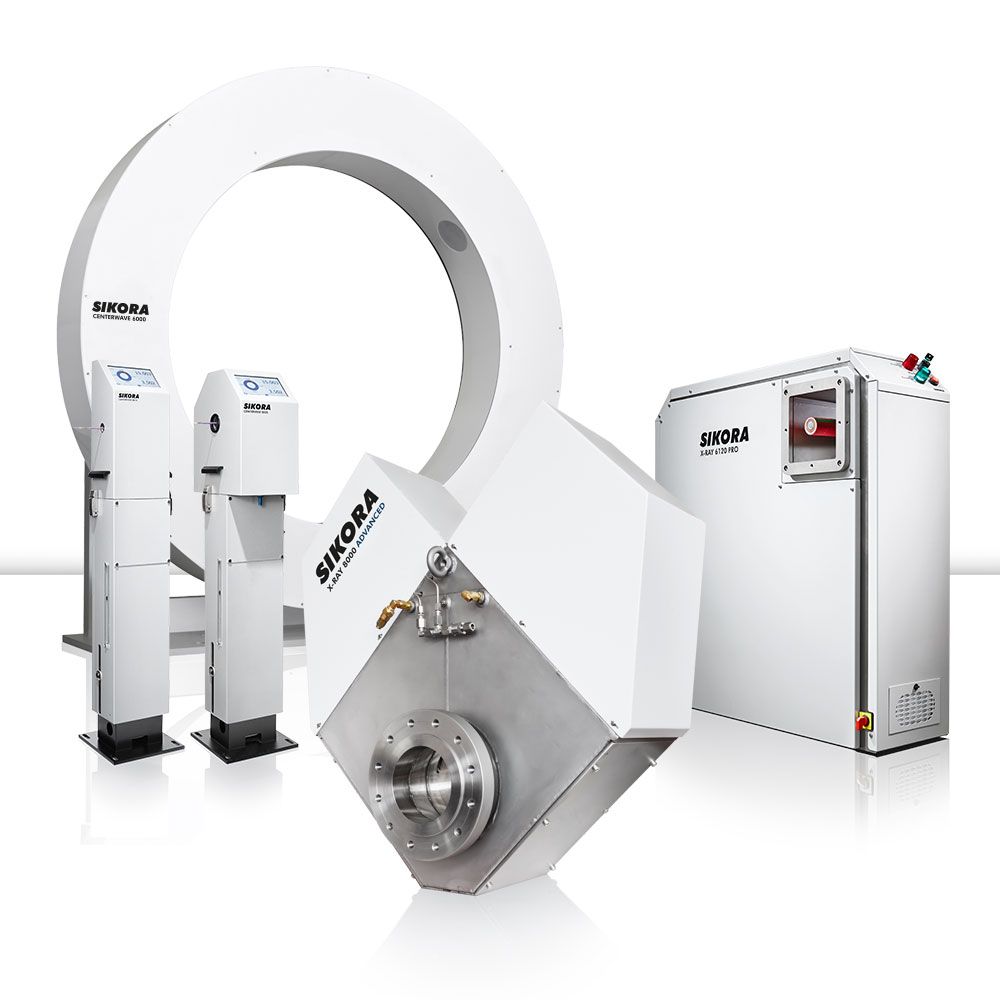
Thickness measurement with X-ray
The thickness measurement with X-ray devices from SIKORA is based on differences in attenuation, so that neither an input of absorption parameters nor a calibration is required.
Two industrial X-ray tubes, offset by 90 degrees, in combination with linear X-ray sensors ensure reliable measurements even for fast running extrusion lines. Short exposure times prevent vibration influences and allow for highest possible accuracy.
In addition to the measurement of diameter, wall thickness and ovality, especially the eccentricity measurement is significant: Only an even distributed wall thickness ensures optimal application of the raw material.
With measuring devices from SIKORA, like the X-RAY 6000 PRO and the X-RAY 8000 ADVANCED/NXT, the wall thickness of different product types can be measured continuously and precisely by means of X-ray technology. Up to 3 material layers can be detected at the same time.
Thickness measurement with radar
Since most plastics are transparent for radar, in this field, it is perfectly suited for measuring underlying layers. In contrast to X-ray technology, radar is completely free of ionizing radiation. Radar is also suitable for dirty environment (oil, steam, or dust), as it is far less affected by this contamination than optical sensor systems.
At least one or more sensors that are placed around the circumference of the pipe, so-called transceivers, continuously send and receive frequency modulated millimetre waves. Boundary layers reflect these radio waves, which are detected by the receiver unit of the respective transceiver and demodulated. These received signals contain information regarding the distances of the boundary layers of different materials.
The algorithmic processing of the received signals of each sensor provides the required measuring results of the diameter, ovality, wall thickness or sheet thickness.
CENTERWAVE 6000 and PLANOWAVE 6000 are highly innovative products without the typical disadvantages of alternative technologies. Therefore, neither the use of any coupling media is necessary nor the consideration of ambivalent temperatures. The technology adapts automatically the material characteristics and thus, makes calibration by the operator unnecessary.
Thickness measurement with laser
Besides measuring the diameter of a round product, laser-based measuring devices can also be used for measuring a wall thickness. Since the laser does not travel through the product, two gauge heads are installed in the production line: One gauge head before the extruder and one gauge head after the extruder. From the difference of the diameters, the wall thickness can be determined.
This is an inexpensive and often used alternative. An eccentricity measurement, however, is not possible.
The measuring principle of the SIKORA LASER Series 2000 and LASER PRO is based on diffraction analysis. A fan-shaped laser beam is directed onto a high-resolution CCD line. On the line sensor, a shadow image of the product emerges. Where it transitions from dark to light, intensity fluctuations occur resulting from the diffraction of light on the surfaces of the product.
Based on the theory of the diffraction of light, the tangents of the left and right geometrical shadow edges are calculated from the information of the intensity fluctuations. Together with the tangents of the measuring plane, which is offset by 90 degrees, four tangents touch the product.
Thus, the diameter is determined independently of its position in the measuring field with an accuracy and repeatability in the submicrometer range.
In the cable production field, however, an essential element in the production line is the CENTERVIEW 8000. It combines laser technology with a position detection of the conductor and, in addition to measuring the diameter, eccentricity and the ovality, it also measures the wall thickness.
Benefits of non-contact inline thickness measurement with SIKORA
Contactless inline measurement of round and flat products provides measuring values that are indispensable in today’s production plants. Therefore, measuring systems for round products, in addition to the wall thickness, also provide information about the eccentricity or the sagging. Whereas the volume density and the surface weights are interesting for plastic sheets – all parameters that can only be detected randomly when done offline and thereby, do not allow for an analysis of the continuous process.
Measuring systems from SIKORA operate independently of material, temperature or couple media and do not require any pre-setting of the product parameters. Essential advantages in order to concentrate on essential criteria:
- Optimization of the start-up and reproducibility
- Assurance of optimal product quality
- Optimization of the material usage
- Increasing the productivity
Calculate your individual saving potential with our Return On Investment calculator!

